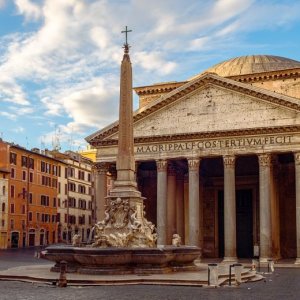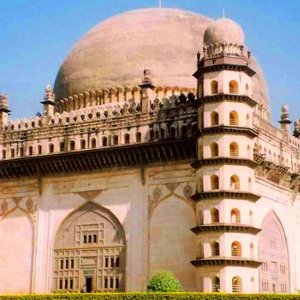Most religious architectural structures in the world are capped with a dome. In fact the architectural lineage of domes dates back to the prehistoric era when domes were constructed from a variety of materials such as metal, snow, mud, wood, stone and even concrete. Domes were usually associated with power and an elevated stature in society, and it may be observed that domes find a position atop the US Capitol in Washington D.C., the Florence Cathedral, a Catholic Church in Florence, Italy, the Dome of the Rock, Jerusalem. Domes were also reflective of usage of advanced mathematics, techniques and materials. Gradually the technique of raising the dome on piers was invented, which permitted lighting and communication. The circle of a dome represents eternity and perfection.







